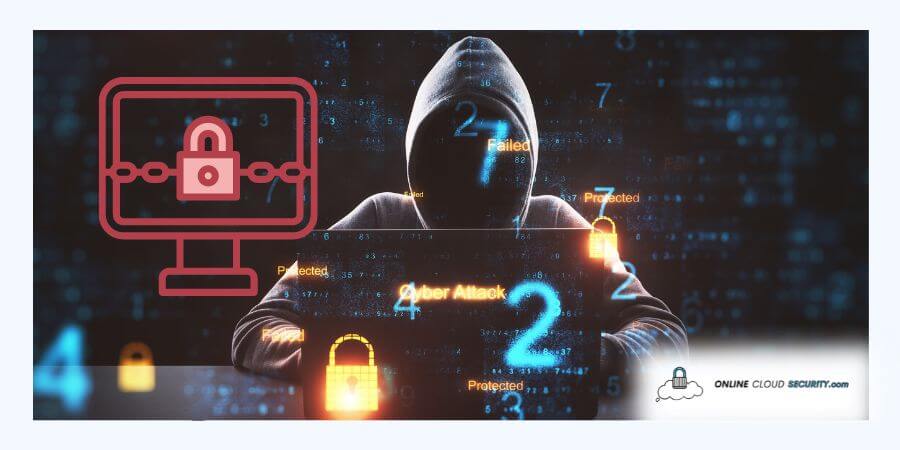
Dave Miller – Tech Enthusiast & Security Expert – September 12th, 2022

How many ransomware variants are there; knowing this information can help in the battle against ransomware. It is because the ransomware operators are becoming more adept at creating, disseminating, and disguising their attacks.
Ransomware typically aims at an extensive network to spread and attack priceless databases. Successful ransomware also has the potential to shut down an entire business swiftly.
It is exceedingly difficult for organizations to defend against this type of malware since it is an ever-evolving malware variant meant to encrypt contents on a computer.
Since there is little likelihood of mitigating the loss once hackers have access to your data, it is essential to take action in advance. Threat actors are motivated to become involved in ransomware since it is easy money.
Let’s go over the various Ransomware attacks as you read the post to help you better grasp what you’re up against.
Ransomware is a subset of malware from crypto virology, according to what we all know about it. If a ransom gets not paid, it threatens to release the victim’s private information, permanently prohibit access, or even erase it. It could appear to be a novel tactic, but it is not. The first known ransomware attack was an AIDS Trojan created by Joseph Popp in 1989, and that is where it all began.
This attack demanded US$189 from the victim and concealed the data on the hard drive by encrypting just their names. Although it may not have seemed like a significant strike, it created the groundwork for the issues we are currently experiencing. The ransomware creator, however, was a scientist who wished to raise funds for AIDS research.
Even years later, ransomware attacks were not all that common in the 2000s. The primary explanation was that there were issues with payment collection. However, once the cryptocurrency got created in 2008. Its use started when its implementation was made available as open-source software in 2009.
As a result, access to virtual currencies became possible, giving criminals a quick and anonymous way to collect money from victims. Moving ahead to the present, 37% of international firms said that in 2021 they had a ransomware attack. Ransomware is, therefore, a significant, maybe even the biggest issue.
For, how many ransomware variants are there? There are numerous ransomware attacks you may not be aware of due to their sheer number. But don’t worry, that’s what I’ll cover next.
You will find various sites online while searching for different Ransomware variations. However, you may generally classify both large categories. One prevents people from accessing systems, and the other encrypts data and files so that users cannot access them.
At the same time, every ransomware strain has a unique method of propagation and user deception. Let’s take a closer look at the various ransomware subtypes and see how many ransomware variants are there
A virus called locker ransomware affects the files on users’ computers. It enabled all files to be locked, restricting access to them. The ransom will be demanded from the victims to unlock the device. Typically, this attack does not take over the entire computer server.
Since these attacks aim only to lock off users from infected devices, it is doubtful that your data will be destroyed entirely. Only the keyboard and mouse would be available to make the payment to the attacker partly. The files are still encrypted with AES; if you don’t know the code, it’s virtually impossible to decrypt them.
Another form of ransomware known as crypto-ransomware will likewise encrypt files saved on a device to demand payment. Crypto-ransomware infects your computer, installs itself, and creates keys in the Windows Registry so that they launch whenever your machine boots. Some recent variations may also infect networked, cloud, and shared storage.
This attack will give you a deadline to pay before the attacker destroys the key to decrypt your files, making it impossible to recover. The attacker would often be able to access the information and even use the system during the attack, but it will be locked for you. Since security experts and law enforcement officials often advise against it, victims should not pay the ransom. However, the entire firm might suffer if lost access and the ransom is not paid.
As a kind of ransomware, leakware threatens victims with the public disclosure of their own data, some of which may be sensitive. This attack uses the user’s anxiety to achieve its goals. It may even impact nationalized companies like banks that handle sensitive or confidential data.
Since the attacker already has access to personal information, it can be leaked even after the ransom is paid since the attacker still controls the data. As a result, this type of attack is rather challenging to handle.
The purpose of this virus, as its name suggests, is to trick users into making purchases by causing fear, surprise, stress, or the sense of a threat. Attackers frequently entice victims to respond quickly without giving people much time to consider or examine their options by using suggestions that appear authentic.
It is a low-level attack because the data is still not encrypted. Users that fall for the bait allow the ransomware to infiltrate their computers, lock them out, or encrypt their data.
A ransomware attack is a service-based business strategy used by its operators and affiliates. It functions similarly to a SaaS approach, which delivers programs via the Internet. Therefore, the affiliates who lack the knowledge or the time to create their ransomware. They can purchase the variation to get started quickly and cheaply.
As a result, anytime the affiliate successfully infects a user, they receive a hefty commission, in contrast to the threat actor. He doesn’t require every attack to be adequate to become wealthy. This strategy has increased the frequency of ransomware occurrences. It makes it more difficult for enterprises to maintain their security. These types of ransomware ultimately demand millions of dollars.
Take the necessary steps to protect your files to prevent being a ransomware attack victim. You should be prepared for it because it’s a real threat. Here are some statistics that may help you understand how ransomware attacks, which are on the rise, have harmed society as a whole.
According to a survey of 1,263 businesses, 80% of victims who paid a hacker’s ransom were targeted shortly afterward.
The University of Surry estimates that those who create ransomware can make up to $1 billion annually. According to SonicWall, 1,211 new types of ransomware are developed daily.
In 80 different occurrences in 2020, ransomware attacks impacted 560 healthcare facilities. The attacks caused significant disruption, some of which were potentially fatal.
The WannaCry ransomware outbreak affected more than 200,000 PCs across more than 150 nations. It caused losses totaling hundreds to milliards of dollars. Hospitals, banks, and telecommunication firms throughout the world were affected.
Ransomware attacks typically cost $1.85 million to recover from, and the downtime costs incurred during an attack are roughly 50 times more than the ransom demanded in 2020.

Ransomware Attacks may be catastrophic to a person or an organization, and recovering from them can be a challenging process that can call for the help of a professional data recovery expert. Recovery sometimes is not even possible. You might want to think hard before paying a ransom to recover your data. The payment of a ransom in exchange for accessing back the company’s computer networks or other resources is not illegal.
When a victim pays the ransom, they likely believe the attackers will give them a decryption tool and end their threat to release the stolen data. There is no assurance that hackers will erase the stolen data. If the information has value, it may be sold or disclosed in the future.
Therefore, in response to a ransomware attack, The FBI opposes paying a ransom. Because it also motivates them to seek new victims. In other circumstances, paying the ransom can even be against the law since it supports criminal behavior.
You can contact the FBI by submitting a report or contacting your local FBI field office.
As a result of the explanation above, you now at least know how many ransomware variants are there. However, I must warn you that there may be further variations that we are unaware of. To stay up with this threat, this field is rapidly growing, and cyber security practices are constantly changing.
The issue is that ransomware is an attack type that must be defeated before it can take control. Since you will quickly be forced to perform things you may not have wanted to once you lose control over your data.
Therefore, to receive maximum security, always be ready in advance and maintain your online safety practices, preventing these malicious programs from getting to your devices. It is the only way.
**Onlinecloudsecurity.com is a participant in the Amazon Services LLC Associates Program, an affiliate advertising program designed to provide a way for websites to earn advertising revenues by advertising and linking to Amazon.com and affiliated sites. As an Amazon Associate we earn affiliate commissions from qualifying purchases.**

Dave Miller is an IT Consultant for Online Cloud Security and has over 7 years of experience in the Information Technology space. He also specializes in repairing laptops & computers. In his spare time, he loves to talk about new technologies and hosts monthly IT and Cyber Security meetings in the Houston area.
Click any button down below to share this article on the following channels:

Online Cloud Security is here to recommend you the most secure devices, from laptops to smartphones, we only want to provide you with products that we have tested and used ourselves for online security. Every product that we recommend is heavily inspected and tested for security against hackers, viruses, malware, and any other intruders that may want to steal your information.

Online Cloud Security is here to recommend you the most secure devices, from laptops to smartphones, we only want to provide you with products that we have tested and used ourselves for online security. Every product that we recommend is heavily inspected and tested for security against hackers, viruses, malware, and any other intruders that may want to steal your information.
Your Trusted Source for Online Security